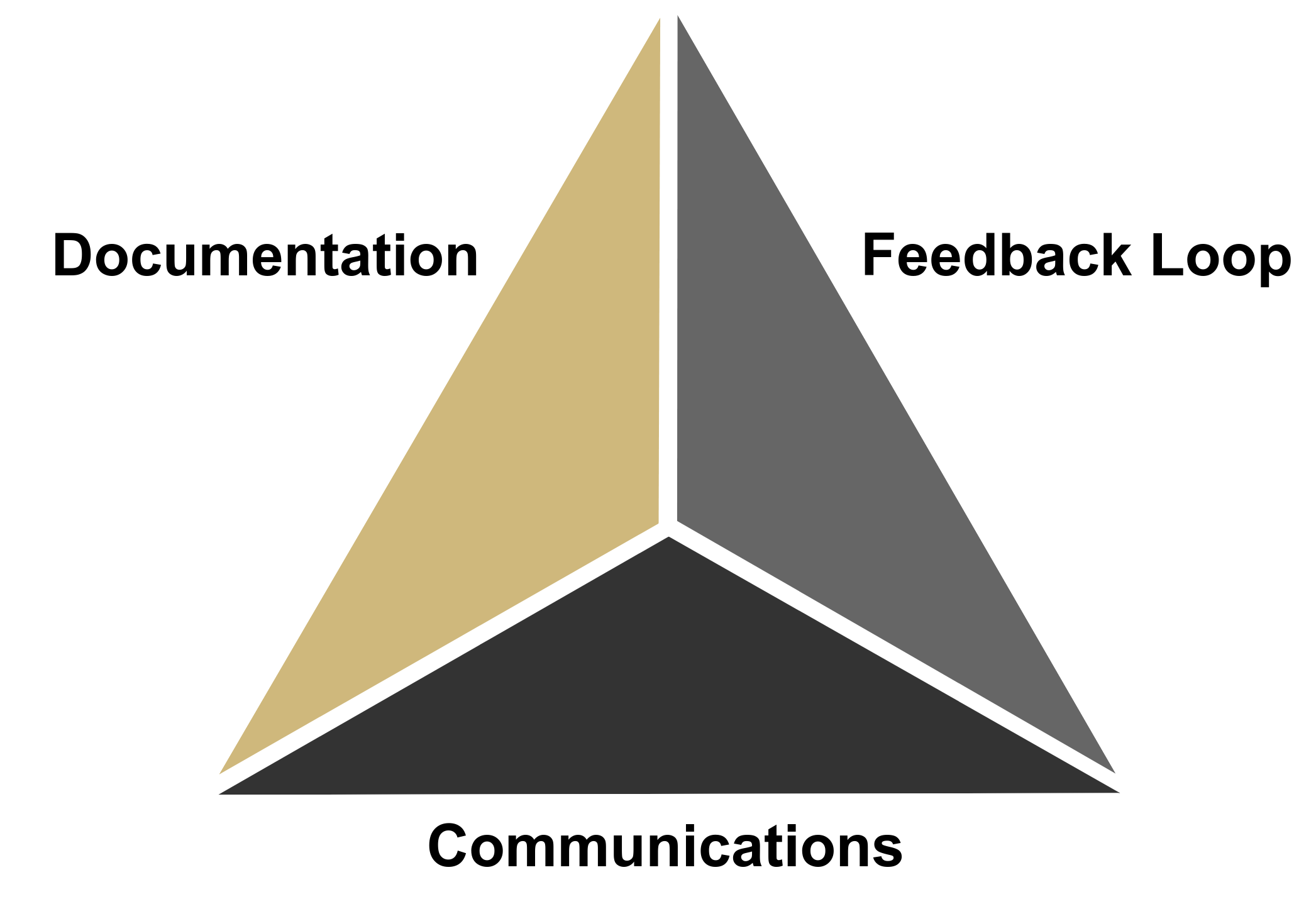Three Keys to Successful Enablement and Training
Enablement is more than training - it requires a holistic approach on three key fronts: documentation, communications, and a feedback loop. While there are many ways to achieve the same goals, technical solutions available today have already proven to be successful. Adopting a similar approach as other groups is the most efficient and fastest way to get started.

- Documentation: Wiki Creation
- Communication
- Salesforce Chatter
- 'Formal' Messaging
- Feedback Loop: Help Ticket
Grow Into Enablement
While documentation, communication, and a feedback loop are the three keys to enablement, they can be achieved in many ways. Below are the most efficient and scalable solutions that have already been proven to be successful. While the fundamentals are the same, there are variations to the approach so it can be customized based on the audience. There are also no associated timelines so it can be adjusted depending on available resources.
- You'll notice the path to growth (crawl, walk, run) is from top to bottom.
- For the most part, you should be moving to a 'walk' phase after successfully 'crawling' in all three areas/columns. In other words, it would be difficult to be 'running' with Salesforce Chatter (column 1) if you have yet to crawl with documentation / help ticket (column 3).
- The chart should reiterate the necessary and holistic approach to enablement, as each area/column impacts all three keys (documentation, communication, and a feedback loop). This not only creates a sense of ease for the client but also brings efficiency to internal employees to scale such solutions.

Approach
Approach to Enablement
- Wikis are Dynamic
- Leverage User Acceptance Testing (UAT) to test resources and find gaps. Let users know to provide feedback if something is incorrect or unclear.
- Record once (including a review of the wiki) & publish
Approach to Change
- Present resources at every opportunity
- Help Ticket
- Wiki Index / Need Help? Start Here.
- Salesforce Chatter Groups
Mantras
- Create a resource for every question, because it will come up again.
- Create a ticket for every question.
- Do not let perfection hinder progress.
- Explain it simply.
What to Avoid
- A 'one and done' approach. User enablement is about constant nurturing.
- A single training or meeting isn't enough. Scale by hosting it once and making the recording available. This allows everyone to get the same education on-demand and opens the door for meeting time to be refocused toward deeper conversations or questions.
- Inaccessible resources create an unnecessary barrier and make users dependent on non-scalable support. Do not send the resource directly to the user during training via email. Instead, show them how to access the resources for themselves for true empowerment.
- Fear-based decisions
- Not documenting due to fear of demand
- Instead, document and be transparent. If you will not provide a feature or know it takes 8 months to complete, say it. This is more likely to mitigate questions than create them. If it does create demand, there is an opportunity for adding it to the roadmap.
- Not launching Chatter due to fear of users' posts
- This would be a great problem to have! It's better to see what people are saying than have it unknown. However, that has not been my experience. 'Inappropriate' posts will occur occasionally, so have a process to address it.
- Not documenting due to fear of demand
- Not adhering to processes (like helping a user when they did not follow the standard protocol of submitting a ticket)
- We are all an integral part of managing change, and being united in our communications and approach is the most efficient path for adoption. Fragmented approaches create a cycle of "one step forward, three steps back".





